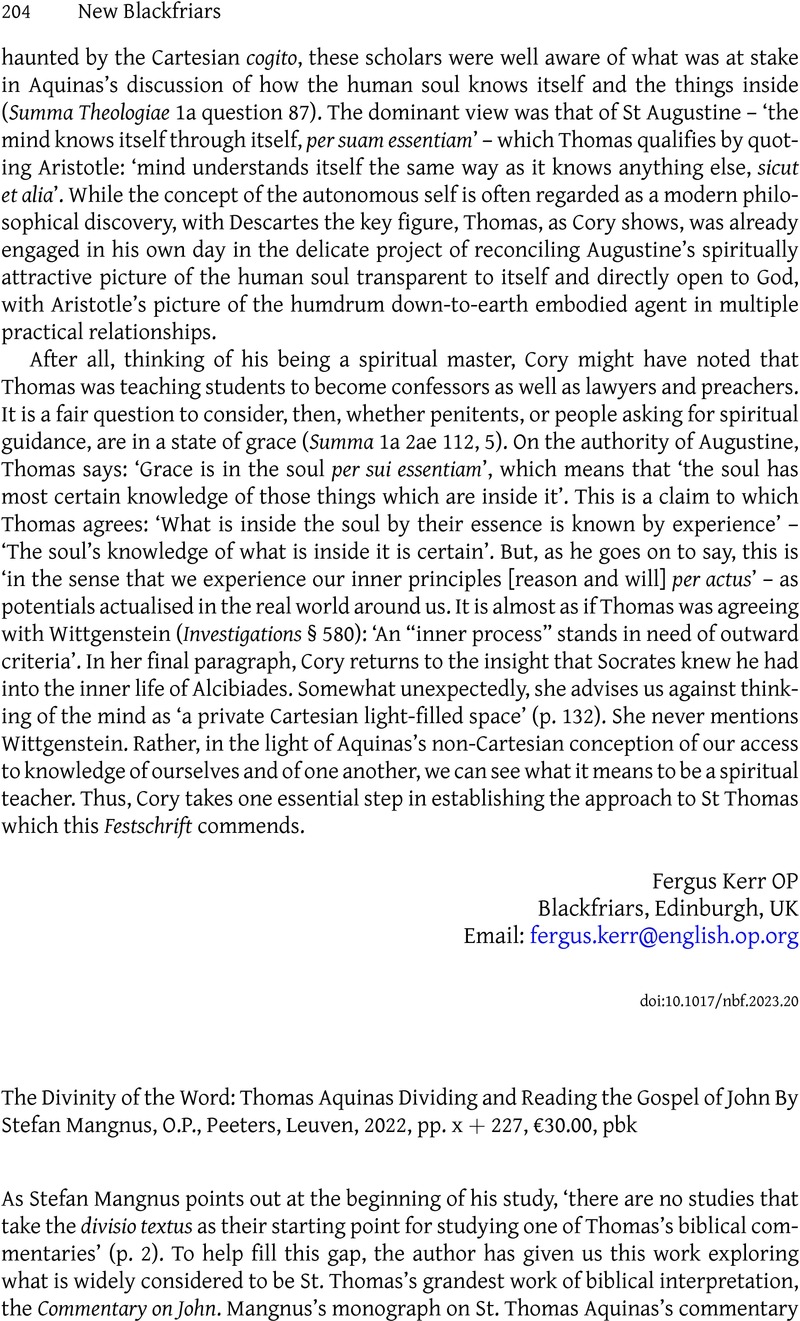No CrossRef data available.
Article contents
The Divinity of the Word: Thomas Aquinas Dividing and Reading the Gospel of John By Stefan Mangnus, O.P., Peeters, Leuven, 2022, pp. x + 227, €30.00, pbk
Review products
The Divinity of the Word: Thomas Aquinas Dividing and Reading the Gospel of John By Stefan Mangnus, O.P., Peeters, Leuven, 2022, pp. x + 227, €30.00, pbk
Published online by Cambridge University Press: 26 January 2024
Abstract
An abstract is not available for this content so a preview has been provided. Please use the Get access link above for information on how to access this content.

- Type
- Review
- Information
- Copyright
- © The Author(s) 2024. Published by Cambridge University Press on behalf of Provincial Council of the English Province of the Order of Preachers.



